15 Best Lower Abs Workouts for Women
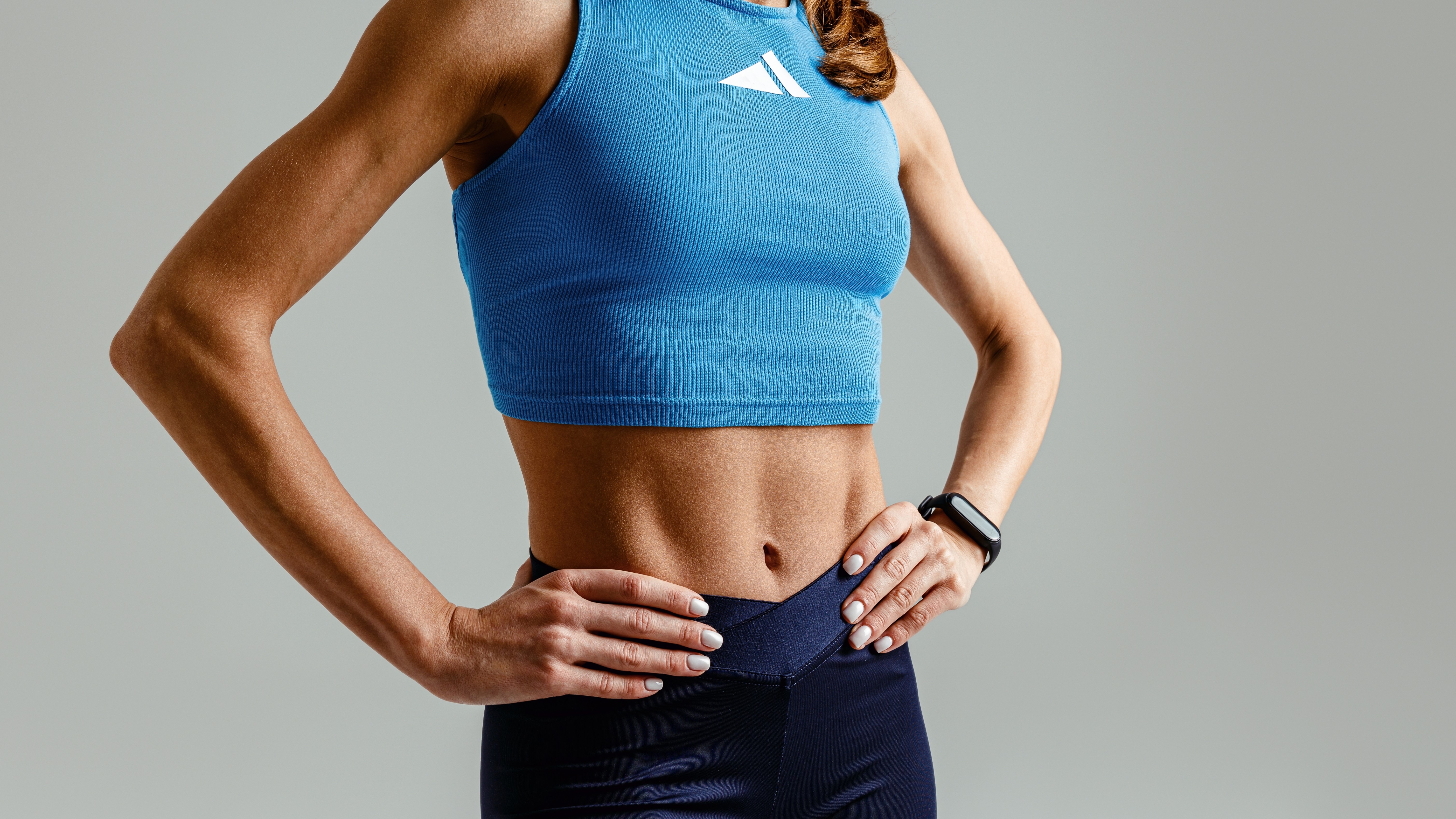
Sculpt a stronger core with these 15 best lower abs workout women can try at home, simple moves, serious results.
You may follow endless routines in workout apps for women and still find your lower belly stubborn and weak after weeks of effort. Real lower abdominal tone comes from targeted lower abdominal exercises that respect breathing, pelvic floor support, and steady progression, rather than relying on more crunches. Want clear beginner-friendly leg raises, reverse crunch progressions, and mat core workouts you can do at home?
This guide gives step-by-step cues, common form fixes, and simple programs to help you confidently learn and perform practical lower ab exercises specifically tailored for women.
GetFit AI's AI fitness app gives guided lower ab routines, on-screen form cues, and progress plans that match your level so you can practice safely and see steady gains. It also offers short at-home workouts, pelvic floor-friendly modifications, and precise tracking so you always know what to do next.
Summary
- Targeted lower ab work that respects breathing and pelvic floor support outperforms more crunches, and the article outlines a 15-move, athlete-style progression to develop strength and control over a 6 to 12 week cycle.
- A simple, repeatable prescription reduces guesswork: start with movement quality, perform 15 reps per exercise, and aim for three sets as an initial target. Then, increase the load, range, or tempo before upping the reps.
- Anatomy favors coordination over brute volume; the rectus abdominis runs about 30 cm in length, while the transverse abdominis is roughly 1 cm thick, so the lower region functions as a precision stabilizer rather than a large mover.
- Visible lower abs are essentially a body composition issue, not just a matter of training, with women typically carrying 6 to 11 percentage points more body fat than men and generally needing around 16 to 19 percent body fat for lower-ab definition.
- Functional gains often arrive before changes in appearance, with 50% of women reporting improved core strength within weeks and 78% now preferring full-core circuits over isolated ab routines to improve transfer to daily tasks.
- Progression stalls when volume increases without feedback, so use objective micro-goals, such as adding 5 to 10 seconds to holds, increasing range by about 5 degrees, or shortening rest by 10 seconds. Follow 8- to 16-week cycles that rotate control, tempo, and load.
- This is where GetFit AI's AI fitness app fits in, addressing these gaps by providing guided lower ab progressions, on-screen form cues, pelvic-floor-friendly modifications, and precise tracking.
15 Best Lower Abs Workout For Women
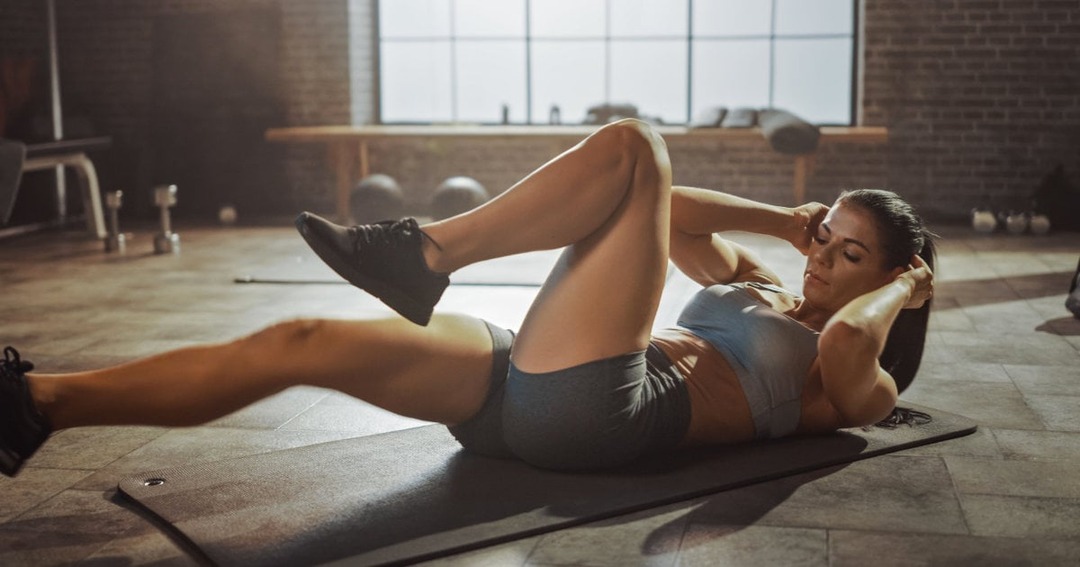
These 15 moves provide a comprehensive, athlete-inspired path to target lower-abdominal strength, control, and endurance, progressing from simple holds to loaded, dynamic patterns. Use them as building blocks, not as isolated fixes, so you can progress safely while improving pelvic stability and the look of your midsection.
1. Plank
The plank is a fundamental core-strengthening move that engages the entire midsection, especially the lower abs, by maintaining a steady position.
How to do it
- Begin on all fours with your shoulders directly above your wrists and your neck aligned straight.
- Tuck your toes and extend your legs backward to form a straight line from head to heels.
- Engage the pelvic floor and transverse abdominis muscles to maintain body stability.
- Hold the position for up to 30-60 seconds.
2. Bear Plank
This variation of the plank increases core challenge by slightly raising knees off the ground, enhancing lower ab engagement.
How to do it
- Start on hands and knees, wrists under shoulders, neck neutral.
- Tuck toes, lift hips slightly, then raise knees a few inches off the floor.
- Keep your core contracted and hips level.
- Hold for 10 to 30 seconds and repeat.
- Tip: Squeezing a small ball or towel between knees intensifies lower ab activation.
3. Glute Bridge
The glute bridge primarily targets the glutes but also activates the lower abs by stabilizing the pelvis during hip lifts.
How to do it
- Lie on your back, knees bent, feet flat on the floor.
- Engage your pelvic floor and core as you lift your hips to create a straight line from your shoulders to your knees.
- Lower hips slowly to the starting position while maintaining core tension.
- Perform 10-15 repetitions.
4. Ab Contractions
This simple exercise isolates the lower abs by engaging deep core muscles through controlled contractions.
How to do it:
- Lie on your back with knees bent and feet flat on the floor.
- Press your lower back into the ground and gently pull your navel toward your spine.
- Hold the contraction for 30 seconds, then relax.
- Repeat 1 to 3 times, with rest intervals in between.
5. Boat Pose
A classic yoga posture that strengthens lower abs by challenging core stability while holding a V-shaped seat.
How to do it
- Sit with knees bent and feet flat on the floor.
- Lean back slightly onto your sitting bones and lift your legs to form a 45-degree angle.
- Extend arms parallel to the floor with palms facing up.
- Hold for up to 1 minute and repeat 1-2 times.
6. Scissor Kicks
Scissor kicks focus on lower abdominal endurance and hip flexor strength by keeping the legs in constant movement while engaging the core.
How to do it
- Lie on your back with your arms alongside your body and your legs raised straight up at a 90-degree angle.
- Lower your right leg slowly while keeping your left leg boosted.
- Lift the right leg back up as you lower the left leg down.
- Alternate this scissor-like motion smoothly.
- Do 1 to 3 sets of 10–16 repetitions.
7. Bicycle Crunches
This dynamic exercise targets the entire abdominal wall, placing special stress on the lower abs and obliques through twisting and leg extension.
How to do it
- Lie on your back, hands interlaced behind your head for neck support.
- Bend knees to 90 degrees.
- Extend your right leg straight while twisting your right elbow toward the left knee.
- Switch sides by bringing the right leg back to a bent position and extending the left leg, twisting the left elbow to the right knee.
- Continue alternating for 1–3 sets of 12–18 total reps.
8. Hollow Hold
The hollow hold strengthens both the transverse abdominis and rectus abdominis, with an emphasis on core stability and lower abs control.
How to do it
- Lie flat on your back with arms extended overhead and legs straight.
- Engage your core to lift your head, shoulders, arms, and legs slightly off the floor.
- Keep your lower back pressed firmly against the ground.
- Hold for 30–60 seconds, then rest.
- Repeat 2–3 times.
9. Lying Leg Raises
This exercise isolates the lower abs by lifting the legs while maintaining a stable torso, also engaging the hip flexors for pelvic support.
How to do it
- Lie on your back with legs extended and hands placed under your hips.
- Lift your legs straight up until they form a 90-degree angle with your torso.
- Slowly lower them back down, stopping just before your feet touch the floor.
- Keep your back flat during the movement.
- Repeat for 5–15 slow, controlled reps.
10. Flutter Kicks
Flutter kicks provide a dynamic fluttering motion that challenges the lower abs to maintain core tension while continuously moving the legs.
How to do it
- Lie down flat on your back with your hands under your glutes for support.
- Lift your legs a few inches off the floor.
- Perform small, quick flutter kicks, moving your legs up and down.
- Keep your head and neck relaxed throughout.
- Continue for 30–45 seconds.
11. Dead Bug
This move enhances core strength and spinal stability by working the lower abs in a slow, controlled pattern.
How to do it
- Lie on your back with arms extended upward and knees bent at 90 degrees.
- Slowly lower your right arm and left leg towards the floor while keeping your back flat.
- Return to the starting position.
- Repeat with the opposite arm and leg.
- Perform 10–12 reps per side.
12. Russian Twist
Though focusing on the obliques, this twisting action also activates the lower abs as you stabilize your core.
How to do it
- Sit with knees bent and feet lifted slightly off the floor.
- Lean back to form a “V” shape with your torso and thighs.
- Hold a lightweight or ball with both hands.
- Twist your torso from side to side in a controlled manner.
- Complete 10–30 slow reps.
13. Mountain Climbers
A fast-paced, cardio-style exercise that targets the lower abs, alongside shoulders and triceps.
How to do it
- Start in a high plank position, wrists under shoulders, body in a straight line.
- Drive one knee toward your chest, then quickly switch legs as if running in place.
- Keep hips low and core tight throughout.
- Perform continuously for 30–60 seconds.
14. Alternating Leg Drops
This exercise emphasizes slow eccentric lowering to strengthen the lower abs with controlled tension.
How to do it
- Lie on your back with legs raised straight at 90 degrees.
- Slowly lower one leg toward the floor, but stop just before touching it.
- Raise the leg back up, then lower the other leg.
- Keep your back pressed firmly against the ground.
- Repeat 12–15 reps per leg.
15. Single Leg Lifts
Single-leg lifts isolate the lower abdominals while minimizing pelvic and spine movement to maintain core engagement.
How to do it
- Lie on your back with your head resting on the floor and legs extended straight up.
- Inhale to prepare, then exhale while slowly lowering one leg, keeping the pelvis steady.
- Inhale as you raise the leg back to the starting position.
- Repeat on the other leg for several sets.
How do these exercises fit into a progression?
When we structured athlete-style lower-ab cycles for female clients over 6 to 12 weeks, a pattern emerged: start with stability and breath, then add isolated lifts, and finally introduce dynamic tension and speed. Isometric holds, such as the plank, bear plank, and hollow hold, teach the nervous system to maintain position under load.
Controlled lifts, such as lying leg raises, single-leg lifts, and alternating leg drops, train the lower rectus and maintain a neutral pelvis. Dynamic patterns, such as bicycle crunches, scissor kicks, and mountain climbers, help build endurance and core-to-limb coordination. Each exercise plays a distinct role, so you can swap or regress without losing the training goal.
Practical programming you can apply today
A simple, repeatable prescription reduces guesswork and boosts consistency. Start with movement quality, then set volume based on your ability. Perform 15 reps of each exercise, following the guidance from Get Healthy U 2023, which provides a clear initial target for building technique and muscular endurance. Aim to complete 3 sets for optimal results, per Get Healthy U 2023, and increase load, range, or tempo before adding more reps. Example session: 3 rounds of an isometric, a controlled lift, and one dynamic move, with 30 to 90 seconds rest between sets, depending on your conditioning.
What breaks progress, and how to fix it
The common failure is repetition without progression, usually because form slips as fatigue sets in or hip flexors take over. When that happens, regress to the range or swap to a hollow hold variant until you can maintain a flat lower back. Think of the lower abs like a drawbridge; when the support cables are weak, the bridge tilts and traffic flows poorly. Cueing breath, pelvic tuck, and slow eccentrics prevent that collapse far more reliably than doing more reps.
Most people default to endless crunch variations because they feel productive and are familiar with them. That approach is understandable, it is simple and requires no equipment. As volume increases, however, inconsistent progression and poor cueing can create plateaus and a higher risk of low back strain. Platforms like GetFit AI provide adaptive athlete-mode progressions with conversational coaching and contextual form cues, so trainees follow a guided ramp that adjusts intensity, corrects technique, and schedules recovery without manual guesswork.
How to progress safely and measure change
Use objective micro-goals: increase hold time by 5 to 10 seconds, add 5 degrees more range on leg lowers, or shorten rest by 10 seconds before adding load. Rotate priorities by week: week one focuses on control, week two on tempo, week three on load, followed by a deload. Track perceived exertion and pelvic control, not just repetitions; when you can do the target reps with perfect alignment, increase difficulty in small steps.
It feels like you covered the basics, but the fundamental constraints that decide who actually gets lasting results lie in how the muscles are organized and connected.
Related Reading
- Workout Apps For Women
- Beginners' Workout For Women
- Average Deadlift Weight Kg Woman
- Upper Body Workout For Women
- Leg Day Workout for Women
What are the Lower Abdominal Muscles?
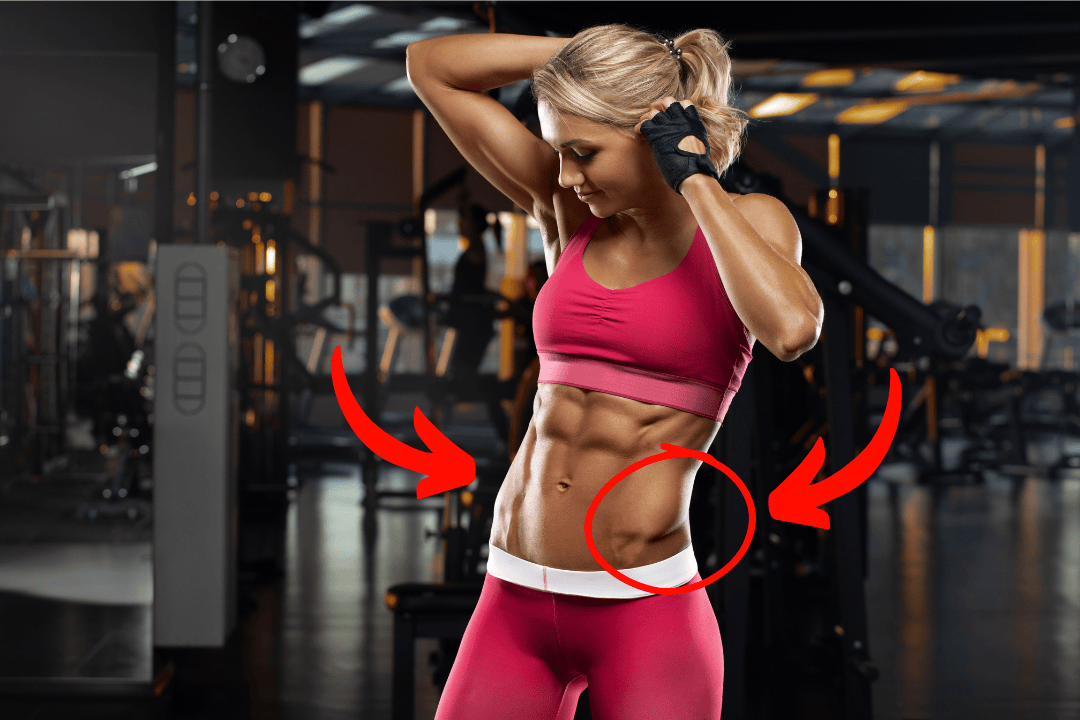
The lower abs, also known as the bottom portion of the rectus abdominis, serve a mechanical purpose, not just a cosmetic one. They fine-tune pelvic tilt, regulate intra-abdominal pressure, and link breath to movement for safe load transfer. Because that region sits where the trunk meets the pelvis, small changes in control manifest as significant shifts in posture, pelvic floor load, and hip movement during everyday tasks and lifts.
How does the rectus length change what the lower abs can do?
The rectus is a long, segmented sheet that runs from the ribs to the pelvis. Crucially, the rectus abdominis muscle is approximately 30 cm long, according to Anatomy, Abdomen and Pelvis: Abdominal Wall - StatPearls - NCBI Bookshelf. That length and its tendinous inscriptions mean the lower portion works with short lever arms near the pelvis, producing precise control rather than large excursions. Think of the lower rectus as the bottom rungs on a ladder, absorbing and redirecting force where the spine meets the hip, rather than generating significant, visible movement.
What role does the deep layer play here?
The transverse abdominis is thin but functionally critical, and the transverse abdominis muscle is about 1 cm thick, per Anatomy, Abdomen and Pelvis: Abdominal Wall - StatPearls - NCBI Bookshelf. That 1 cm of tissue wraps the trunk like a thin band, increasing intra-abdominal pressure and tensioning the linea alba, allowing the rectus to work more efficiently. In practice, small changes in how the transverse abdominis engages will alter pelvic stability more than adding extra reps ever will.
Why does progress often feel slow for women, especially after life changes?
When we coached women returning to training after pregnancy or hormone therapy, a clear pattern emerged over a 12‑week cycle: improvements in control and comfort came faster than visible tone, and many athletes reported plateauing aesthetics despite better pelvic alignment. The constraint was not effort; it was biology and motor control, for example, altered fat distribution, changes in connective tissue after pregnancy, and neural inhibition that protects the pelvis. That combination makes the visible “toning” part slower, and it turns a straight training fix into a multi‑factor problem requiring consistent load, restored neuromuscular timing, and recovery.
What usually trips up trainees working the lower abs?
Here is the predictable failure mode: people treat the lower abs like an isolated aesthetic target, measuring success by reps or mirror snapshots, which fragments training goals as complexity rises. As repetitions climb without objective feedback, form drifts, compensatory muscles take over, and progress stalls. Platforms like GetFit AI fill that gap by translating athlete-tested routines into adaptive coaching, tracking movement quality, adjusting intensity and recovery cues, and providing contextual form reminders, so trainees can trade guesswork for measurable progress.
How does this affect exercise choice and daily movement?
The lower rectus is built for coordination more than brute force, so its training should emphasize tension and timing that transfer to standing and loaded patterns. That means integrating exercises and movement cues that require the lower abs to stabilize during hip and leg drives, managing breath to maintain pressure, and pacing recovery. Hence, connective tissue remodels rather than just fatigues. Consider the lower abs a control center for movement, not a vanity zone to blitz with high reps.
That explanation feels settled, but the next section exposes a more brutal, more personal truth about why women often still struggle to get lower abs, and it is not what you expect.
Is It Hard for Women to Get a Flat Stomach?
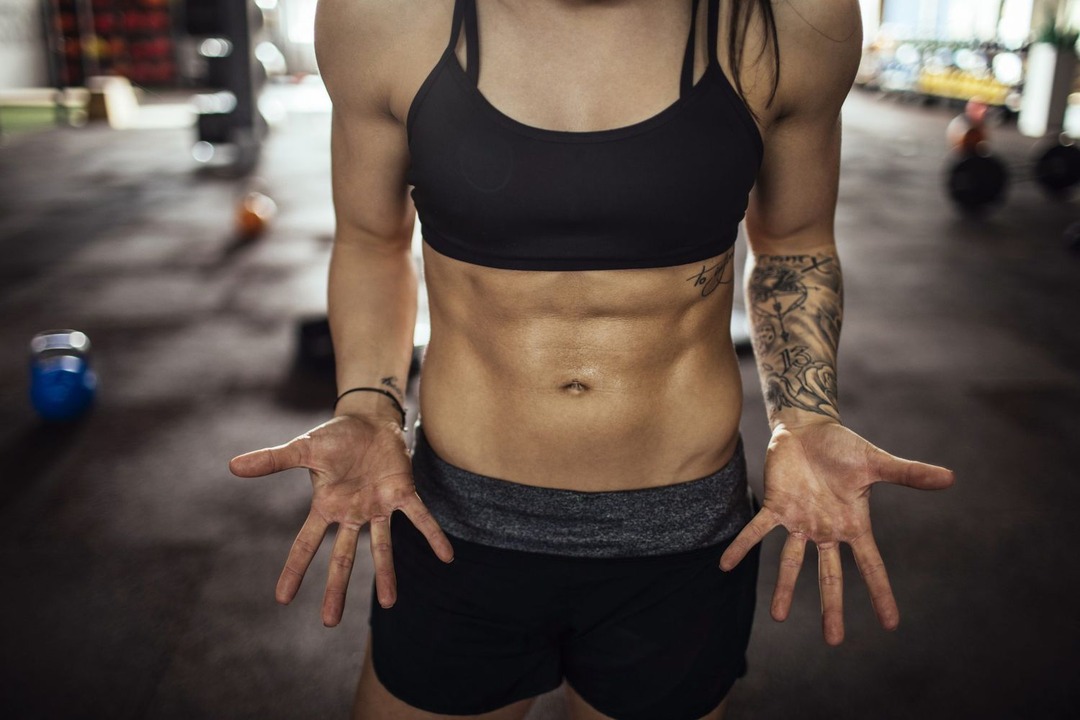
Yes. For many women, achieving visible lower abs is more challenging because the goal depends more on modifying body composition than on performing more crunches, and this process is influenced by biology and daily habits. You can build strong lower‑ab muscles reliably, but the visual result usually only appears once overall body fat aligns with individual thresholds.
What special factors make the lower abs stubborn for women?
Women generally have 6-11% more body fat than men, which can make it harder to achieve visible lower abs, according to Dumbbells Direct. That extra percentage is not an aesthetic quirk; it is a physiological pattern: sex hormones and genetic fat distribution preferentially reserve subcutaneous tissue around the hips and lower belly. The practical result is simple to describe and hard to live with. You can strengthen the muscles underneath, but the layer over them will still hide definition until the composition shifts.
How low does body fat actually need to be before lower abs become visible?
On average, women need to reach a body fat percentage of around 16-19% to have visible lower abs, according to Dumbbells Direct. That number is an average, not a promise; genetics, bone structure, and where your body stores fat all contribute to what you see in the mirror. Think of the muscle as a carved statue and fat as a blanket; you can chisel the stone beneath, but you will not see the details until the blanket thins enough in the right place.
Most programs continue to follow familiar patterns, which hinders progress.
Most trainees stick with generic ab circuits because they are familiar and straightforward. That makes sense, but the hidden cost becomes apparent after weeks of effort: time spent on high-rep routines yields slight improvements in body composition, inconsistent recovery, and no correlation between training dose and caloric or hormonal context. Platforms like GetFit AI translate athlete-tested progressions into personalized plans, aligning intensity, form cues, and recovery with your daily energy targets. Hence, training becomes a coordinated lever, not just busywork.
Why persistence and expectation management matter more than technique tweaks
This frustration is real: clients tell us they feel defeated when core control improves but the mirror lags, and that gap often fuels more restrictive dieting or endless extra sessions. The predictable failure mode is chasing isolated technique fixes while ignoring sleep, stress, and calorie balance; that works until it does not, and then people burn out. A more effective approach is to combine progressive resistance, sustainable nutrition, and measured recovery over 8 to 16 weeks, then assess objective changes in composition and movement quality, rather than relying on mirror snapshots.
How hormones, life stage, and visibility interact
Hormonal shifts around pregnancy, menopause, or even the monthly cycle change water retention, fat partitioning, and perceived abdominal fullness. That is why the timeline for visible changes varies widely between someone who is 26 and someone who is 46, even if both follow excellent training programs. It helps to treat those phases as constraints to plan around, rather than failures to fix with more repetitions. Minor, consistent adaptations in training and energy balance work within those constraints; large, abrupt measures rarely stick.
The emotional truth behind the numbers
It is exhausting when biology and social expectation collide, and many women respond by doubling down on exercises that feel productive but are misaligned with the real lever, which is body composition. That confusion breeds shame, which in turn leads to avoidance. When coaching for months at a time, the pattern is clear: steady, measurable changes in performance and routine adherence lead to better long-term outcomes and preserve well-being far more effectively than frantic, cosmetic chasing.
One sentence to create tension for what comes next:
What you gain from lower‑ab training is bigger than what the mirror shows, and the next section explains the real payoff you probably did not expect.
Benefits of Lower Ab Workouts for Women
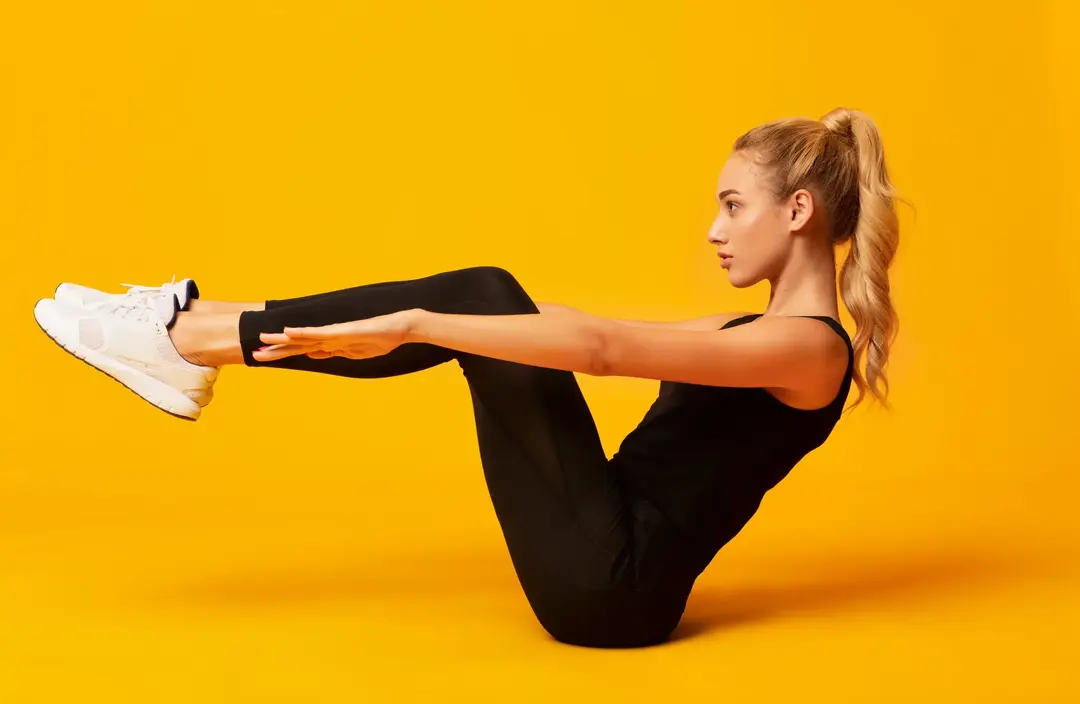
Lower ab workouts offer more than a tighter midsection; they enhance your body's ability to manage pressure, breath, and movement, making daily tasks and heavy lifts feel safer and more efficient. You gain better coordination with the pelvic floor, smoother breathing under load, and a more straightforward pathway for strength to transfer into standing, pushing, and carrying.
How does lower‑ab strength change breath and load transfer?
When we prioritize lower‑ab engagement alongside breathing drills for 6 to 12 weeks, clients move with less effort. That pattern manifests as easier stair climbs, cleaner hip hinging under load, and fewer instances where the breath breaks during a heavy set. The lower abs help regulate intra-abdominal pressure, which stabilizes the spine while you lift, and training that timing pays off the moment you pick up a child or a heavy grocery bag.
Can lower‑ab work reduce pelvic floor strain and improve continence?
Yes, but only when you train coordination rather than force. Training that links timed exhalations, pelvic tuck, and low‑range contractions reprograms the nervous system so the pelvic floor and lower rectus work together instead of fighting each other. In practical terms, this reduces the sudden pressure spikes that trigger urgency or leakage during jumps, coughs, or heavy carries, especially after pregnancy or periods of deconditioning.
Why do integrated routines matter for real life, not just aesthetics?
The familiar habit is to isolate the midsection with endless crunches because it feels productive and simple. That approach works for short bursts, but as daily demands increase, the hidden cost is poor transfer: a strong feeling in the gym that never translates to improved carrying, running, or posture. Platforms like GetFit AI offer athlete-tested, adaptive progressions that translate gym control into standing function by adjusting intensity, providing form cues, and pacing recovery, making training a tool that enhances how your body performs outside the session.
What should you expect when you switch from isolated to full‑core approaches?
According to Industry data, 78% of women now prefer full-core circuits over isolated exercises. This trend reflects a shift toward programs that prioritize transfer to movement and sport rather than mirror-only goals. That shift matters because full-core sequencing builds the timing and endurance that the lower abs need to work in conjunction with the hips and breathe during everyday tasks.
How quickly will you feel the difference in strength and comfort?
Improvements in control often arrive before changes in appearance. According to Women's Health Magazine, 50% of women reported improved core strength after incorporating lower ab workouts into their routine. Many notice functional gains within weeks, especially when sessions emphasize coordination and progressive overload. Expect better load handling, reduced episodes of low back strain in daily life, and improved confidence moving in small but meaningful ways.
What are the emotional payoffs that people underestimate?
Clients frequently tell us they feel less guarded in everyday movement, more willing to play with their kids, or more confident returning to heavier lifts after a focused lower‑ab cycle. That feeling is not decoration; it sustains adherence. When training improves how you live, not just how you look, motivation becomes steady instead of fleeting.
Status quo, the hidden cost, and the bridge
Most people manage core training with repetitive ab circuits because they are familiar and require no personalization, and that is understandable. As goals expand to include lifting, running, and parenting duties, those one‑size routines fragment into inconsistent transfer and stalled progress. Platforms like GetFit AI, an AI fitness app, centralize personalized athlete-style progressions with conversational coaching, providing real-time form reminders, intensity adjustments, and recovery scheduling, so that performance in the gym directly maps to daily function.
Ready to train like the legends and finally achieve the body you've always wanted? GetFit AI's AI fitness trainer app lets you follow the exact workout routines that helped Arnold Schwarzenegger, Kobe Bryant, Cristiano Ronaldo, Serena Williams, and over 11 other elite athletes become champions. You can chat with them whenever you need guidance or motivation. Download the #1-rated AI fitness app for free today to get fit for less than the cost of a single month's gym membership. Because greatness isn't born, it's built one workout at a time.
That improvement feels good, but the next issue is trickier and more urgent than you expect.
Related Reading
- Workout Plans For Women
- Free Workout Apps For Women
- Workout Routine For Women
- Full Body Workout For Women
Safety Tips to Keep in Mind
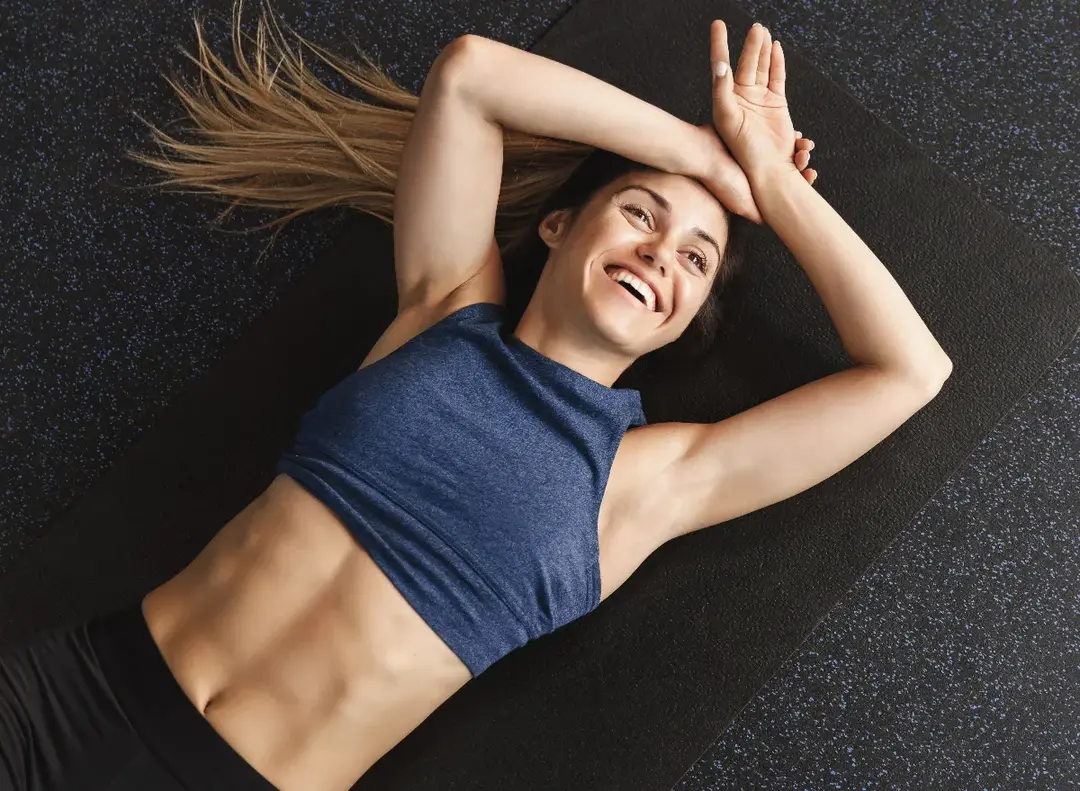
Start with a quick readiness check and a clear stop rule, then shape every session around control, not the number of calories burned. Small preflight checks, objective micro‑goals, and a safe environment remove most risk and let you build lower‑ab strength without trading form for vanity.
How should I screen myself before the first session?
Do a brief functional screen, five minutes or less: a supine pelvic tilt held for five seconds, a single‑leg stand for ten seconds, and a gentle head‑lift while you feel for any midline bulge or separation. If any of those fail, regress to supported holds and mobility drills until you can hold position reliably for three consecutive training days. After childbirth or surgery, get clearance from your provider; many clinicians recommend assessing readiness around six to twelve weeks postpartum, but individual healing varies.
What pain or warning signs mean to stop and see a clinician?
Stop immediately if you experience sharp, shooting pain, new numbness or tingling in a leg, sudden changes in urinary or bowel function, or a visible, forceful bulge at the midline when you strain. Persistent low back pain that increases with simple positional changes, not just exercise, is another red flag. Treat those as signals, not setbacks; early assessment saves weeks of misguided training.
How should I set up my space, tech, and safety nets?
Keep the floor firm, the mat flat, and position a mirror or phone camera at an angle that allows you to confirm the lower back remains in contact with the floor. Since SafeWise, 45% of smartphone users have installed at least one safety app, use location sharing, or an emergency contact when training alone away from home. Many women also add a small wearable or alarm for solo outdoor sessions, and SafeWise. The use of personal safety devices has increased by 30% in the last year, so consider a discreet device if your routine takes you into isolated spaces. A reliable app that records reps and offers video feedback makes technical errors obvious before they become painful habits.
Why do athletes stall quietly, and what breaks that pattern?
This pattern appears across court sports and strength training: athletes add volume for four to eight weeks, polish form less, and then hit a plateau because motor control never solidifies. The failure point is usually a lack of consistency without feedback, not effort. Fix it by measuring mastery, not minutes: require flawless pelvic control on a baseline drill for three sessions before increasing range or load, and use minor, repeatable progressions like 5 percent more ROM or 5 seconds more hold time.
What pacing rules actually prevent overload?
Progress slowly and test thresholds objectively. Increase total weekly volume by no more than 5 to 10 percent, or lengthen holds by 5 seconds at a time. Only add external load when you can perform target reps with perfect alignment on three separate days. Track core RPE, aiming for moderate intensity on training days and leaving one full recovery day when soreness limits movement quality. Think of your core like a camera tripod; if one leg tightens or collapses, the whole picture blurs, so prioritize balance over brute force.
Where does personalization help, without buying every gadget?
Most people follow generic video series because they are familiar and easy to follow. That works at first, but as you push range, speed, or load, form slips and pain patterns appear. Platforms like GetFit AI fill that gap, offering personalized intensity ramps, contextual form cues, and conversational check‑ins so trainees get feedback that actually corrects their daily mistakes rather than amplifying them.
How can you use breathing and pelvic cues without rehashing the basics?
Use one practical timing cue: inhale to prepare with a soft belly, then exhale as you initiate the lift while gently drawing the navel toward the spine, keeping the pelvis steady. If the lower back rises or you lose the cue within three reps, shorten the range and repeat the drill at a slower tempo until the pattern sticks.
A short, exact micro test you can use right now
Try two leg lowers to 45 degrees, three reps, keeping the lower back flat; if you cannot do that without breath holding or arching, regress to supported single‑leg lowers and retest after seven days.
That training plan feels safer, but what happens when you try to scale it on your own usually breaks everything, and that’s the part most people miss.
Related Reading
- Lower Abs Workout for Women
- Ab Workout Women
- Hiit Workout Women
- Arms Workout for Women
Make Your Favorite Athlete Your Fitness Trainer | Try GetFit AI's AI Trainer App for Free Today

If you want evident, measurable progress in lower abs training, consider GetFit AI as a practical option you can actually follow. It feels easier to stick with familiar crunch routines that leave you stalled, so solutions like GetFit AI translate athlete-style progressions into adaptive coaching you can use. Getfit AI Website, 90% of users reported improved fitness levels within 3 months, while GetFit AI Website, 75% of users prefer GetFit AI over traditional trainers.



.png)











